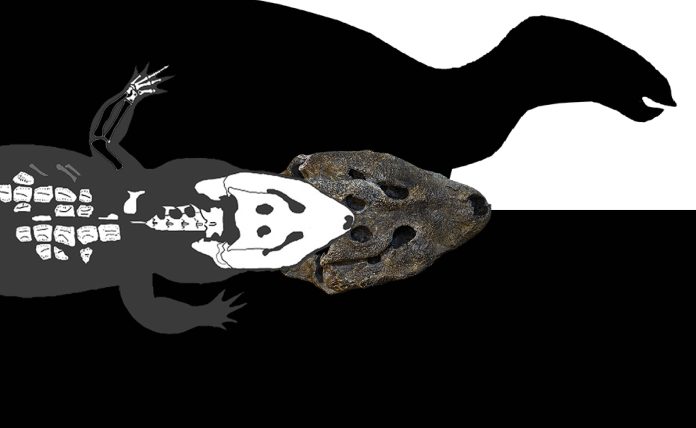by EH
A team of paleontologists and scientists from some of Italy’s leading research institutions has made groundbreaking discoveries at the Villaggio del Pescatore, Italy’s most important paleontological site. New studies have revealed detailed insights into the animals that roamed this region 80 million years ago, including a small dinosaur nicknamed “Antonio” and an ancient crocodile with a surprisingly unique set of teeth.
The new findings will be presented to the public on September 24 at the Urban Center in Trieste, marking a significant milestone in the ongoing research that began in 2021. The event, introduced by Deputy Mayor Serena Tonel, will feature leading researchers from the University of Bologna, the University of Trieste, Zoic srl, and Elettra Sincrotrone Trieste, whose collaboration has allowed for a reexamination of fossil specimens with cutting-edge technology.
“It’s as if we’re seeing these fossils for the first time,” said Dr. Diego Dreossi of Elettra Sincrotrone, one of the key partners in the research. By using advanced tomography scanning, researchers were able to peer inside the fossilized bones without damaging them. “What we’ve uncovered has given us an unprecedented view into the internal structures of these ancient animals,” Dreossi added.
The research team, supported by Zoic srl—a Trieste-based paleontology company known globally for its expertise in fossil extraction and preservation—has focused on the remarkable fossilized remains at the Villaggio del Pescatore. These fossils, some of which had been partially studied in the past, were revisited using advanced techniques. The results? Astonishing details about the internal biology of these creatures, particularly in the case of Antonio, Italy’s most famous dinosaur.
The public event will showcase the results of these studies, including how tomography scans were used to reconstruct Antonio’s blood vessels, providing insight into how this dinosaur might have lived and functioned millions of years ago. Another highlight is the discovery of the skull of Acynodon, an ancient crocodile whose teeth and diet offer clues about the Cretaceous period’s ecosystem.
“This project represents a significant step forward in our understanding of how these animals lived and interacted with their environment,” said Professor Federico Fanti of the University of Bologna, who will be one of the presenters at the event.
The Villaggio del Pescatore site has long been a treasure trove for paleontologists, but the latest research, made possible by funding from the Municipality of Trieste and new technological advancements, has opened up fresh possibilities. Researchers combined excavation data with new analyses, providing a comprehensive view of the ancient ecosystem preserved in this unique site.
The event, open to the public, promises not only to share these exciting scientific discoveries but also to emphasize the importance of continuing to study the region’s geological and evolutionary history.
For Trieste, these findings underscore its growing reputation as a hub for scientific research, especially in paleontology. Thanks to the collaboration of institutions such as the University of Bologna, ISPRA, and Elettra Sincrotrone Trieste, Italy is poised to remain at the forefront of new developments in the study of ancient life.
As the world looks forward to Researchers’ Night later this fall, the revelations from the Villaggio del Pescatore highlight the crucial role ongoing research plays in uncovering the secrets of Earth’s distant past.





























